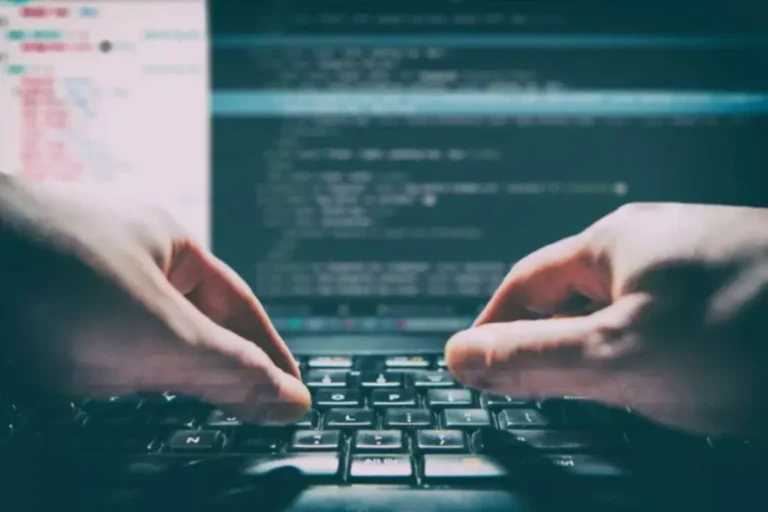We can see that the accuracy of the prepare model on both coaching data and check data is less than 55% which is kind of less. So our model, in this case, is suffering from the underfitting problem. For this problem, our information have 4 options, specifically the name of the person, his/her schooling, his/her experience, and his/her ability set. Based on our widespread sense, we all know overfitting in ml that the person’s name isn't a factor that impacts the person’s salary. But regardless of this reality, if we use the person’s name as one of the features in our data, our model would possibly attempt to find some sort of relation between name and wage. And this kind of relationship may add some extra accuracy to our model.

Optimizing Machine Studying Fashions With Hyperparameter Tuning
Overfitting is a ubiquitous challenge confronted when coaching machine studying models with vital flexibility and capability. It occurs when a model matches so closely to the noise and particulars within coaching information that performance suffers dramatically on new examples. Overfitting examples Consider a use case the place a machine learning mannequin has to research photos and identify those that include dogs in them. However, the test knowledge only includes candidates from a particular gender or ethnic group. In this case, overfitting causes the algorithm's prediction accuracy to drop for candidates with gender or ethnicity outdoors of the take a look at dataset. On the opposite hand, underfitting arises when a mannequin is just too simplistic and fails to capture the underlying patterns within the data.
How Bias And Variance Impression Overfitting Vs Underfitting
What this implies is that you could end up with extra knowledge that you don’t necessarily need. They have high prices when it comes to high loss capabilities, that means that their accuracy is low – not exactly what we’re on the lookout for. In such circumstances, you quickly notice that either there are not any relationships inside our information or, alternatively, you want a extra advanced mannequin.

Typical Features Of The Training Curve Of An Underfit Model
However, after a degree ~5 epochs for this mannequin, the validation accuracy reaches a peak and then plummets while the training accuracy continues growing. Overfitting and underfitting are two issues that may occur when building a machine learning model and may lead to poor performance. Cross-validation allows you to tune hyperparameters with only your unique coaching set.
Typical Options Of The Training Curve Of An Overfit Mannequin
I’ll be talking about varied strategies that can be utilized to handle overfitting and underfitting on this article. I’ll briefly discuss underfitting and overfitting, followed by the dialogue concerning the techniques for dealing with them. This is what happens when we apply a linear mannequin to a non-linear data. It will not carry out well neither perform good on the prepare data nor on the test knowledge.
- This type of model doesn’t generalize well on test as properly as new knowledge.
- However, the take a look at knowledge only consists of candidates from a particular gender or ethnic group.
- This means the mannequin performs well on training information, but it won’t be able to predict accurate outcomes for model spanking new, unseen data.
- The problem of overfitting mainly occurs with non-linear fashions whose decision boundary is non-linear.
In such circumstances, the overfitted model adapts too carefully to the peculiarities of the training set, making it less capable of handling new and various cases. Overfitting might occur when training algorithms on datasets that comprise outliers, noise and different random fluctuations. This causes the model to overfit tendencies to the training dataset, which produces excessive accuracy in the course of the coaching part (90%+) and low accuracy during the take a look at part (can drop to as little as 25% or under).

Oftentimes, the regularization method is a hyperparameter as well, which suggests it can be tuned via cross-validation. If two models have comparable performance, then you must usually choose the less complicated one. Then, as you strive extra complex algorithms, you’ll have a reference point to see if the additional complexity is value it.
Positions like information engineer, AI product supervisor, or AI ethicist offer thrilling opportunities which will align better together with your skills and pursuits. Technical expertise alone just isn't enough to achieve data science and machine learning. Collaboration and communication are important skills that can significantly influence your effectiveness and profession progression. To create actually impactful machine studying options, you should understand the enterprise context in which your models will operate. Grasping the real-world issues you purpose to unravel ensures that your work is relevant and priceless.
Before diving into the subjects, let’s perceive two different sorts of errors that are needed to know underfitting and overfitting. Bias and variance are two errors that can severely impact the performance of the machine learning model. The purpose of the machine learning mannequin must be to provide good training and test accuracy. Overfitting and Underfitting are two common pitfalls in machine studying that occur when a model’s performance deviates from the specified objective. In classification duties, an underfitted mannequin might produce determination boundaries which may be too simplistic, leading to misclassification of instances from different courses.

Then the model does not categorize the data accurately, because of too many details and noise. A answer to avoid overfitting is using a linear algorithm if we've linear knowledge or using the parameters just like the maximal depth if we are utilizing decision timber. A statistical mannequin or a machine studying algorithm is alleged to have underfitting when a mannequin is too easy to seize knowledge complexities. It represents the inability of the model to study the coaching information successfully lead to poor performance both on the coaching and testing data. In easy terms, an underfit model’s are inaccurate, especially when utilized to new, unseen examples.
Overfitting is when an ML mannequin captures too much element from the data, resulting in poor generalisation. It will exhibit good performance throughout training but poor efficiency during testing. Supervised fashions are educated on a dataset, which teaches them this mapping perform. Ideally, a model ought to have the flexibility to discover underlying trends in new information, as it does with the training data. The drawback of overfitting primarily happens with non-linear models whose decision boundary is non-linear. An instance of a linear choice boundary is normally a line or a hyperplane in case of logistic regression.
More advanced strategies like stacked generalizations contain multilevel mixtures of models into predictive pipelines. As $M$ grows very large (e.g. 100), there are enough parameters so $f(x)$ can precisely interpolate every training instance. This gives perfect zero training error but wildly oscillates elsewhere. Before surveying specific causes and cures for overfitting, it helps to build intuition by visualizing what overfitting seems like in follow.
Opposite, overfitting is a scenario when your mannequin is too complex for your knowledge. More formally, your hypothesis about data distribution is mistaken and too advanced — for instance, your data is linear and your mannequin is a high-degree polynomial. This means that your algorithm can’t make correct predictions — altering the input knowledge only a little, the model output modifications very a lot. In many purposes, especially in delicate fields like healthcare or finance, balancing mannequin complexity with interpretability is important.
While the mannequin could obtain impressive accuracy on the training set, its efficiency on new, unseen information may be disappointing. This graph properly summarizes the issue of overfitting and underfitting. As the flexibleness in the mannequin will increase (by increasing the polynomial degree) the training error frequently decreases because of elevated flexibility. However, the error on the testing set solely decreases as we add flexibility as much as a sure level. In this case, that occurs at 5 degrees As the flexibility increases past this level, the training error will increase because the model has memorized the training data and the noise. Cross-validation yielded the second best mannequin on this testing information, but in the long run we count on our cross-validation model to perform finest.
Transform Your Business With AI Software Development Solutions https://www.globalcloudteam.com/ — be successful, be the first!
